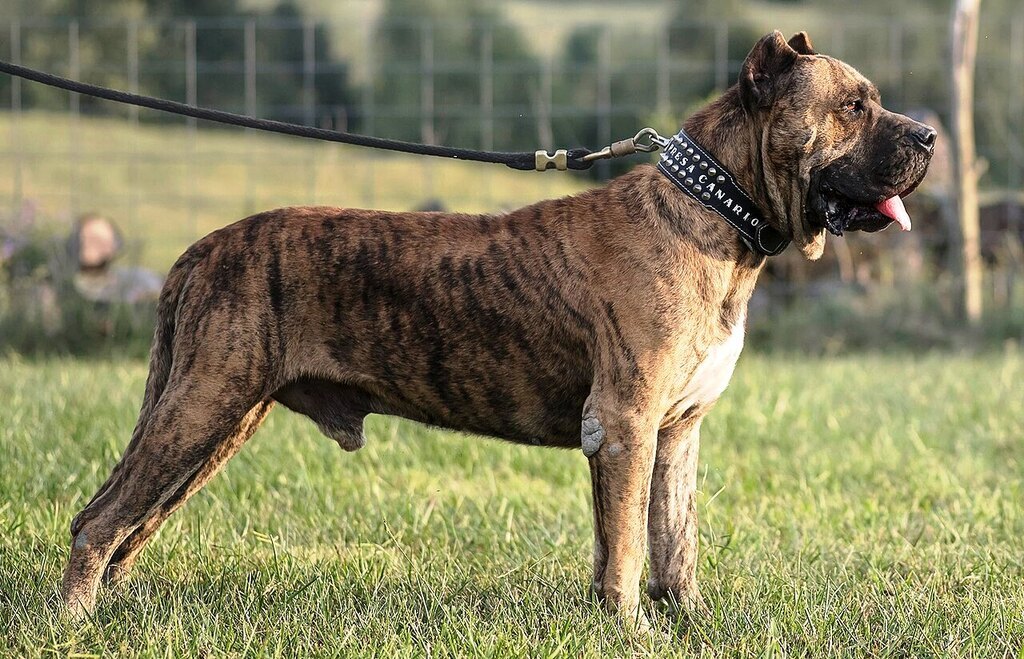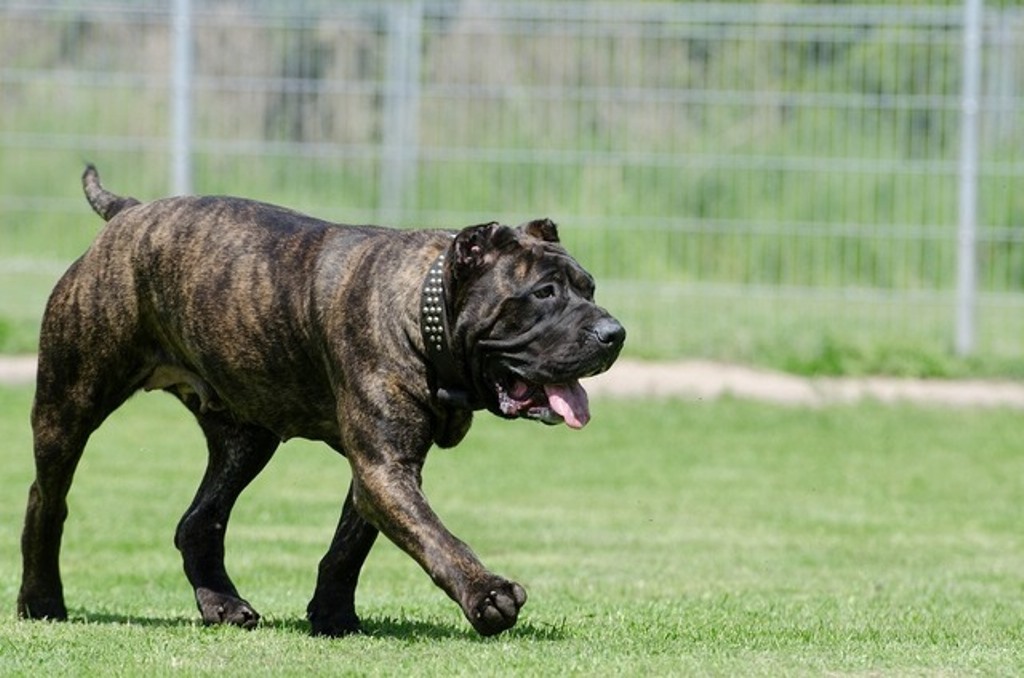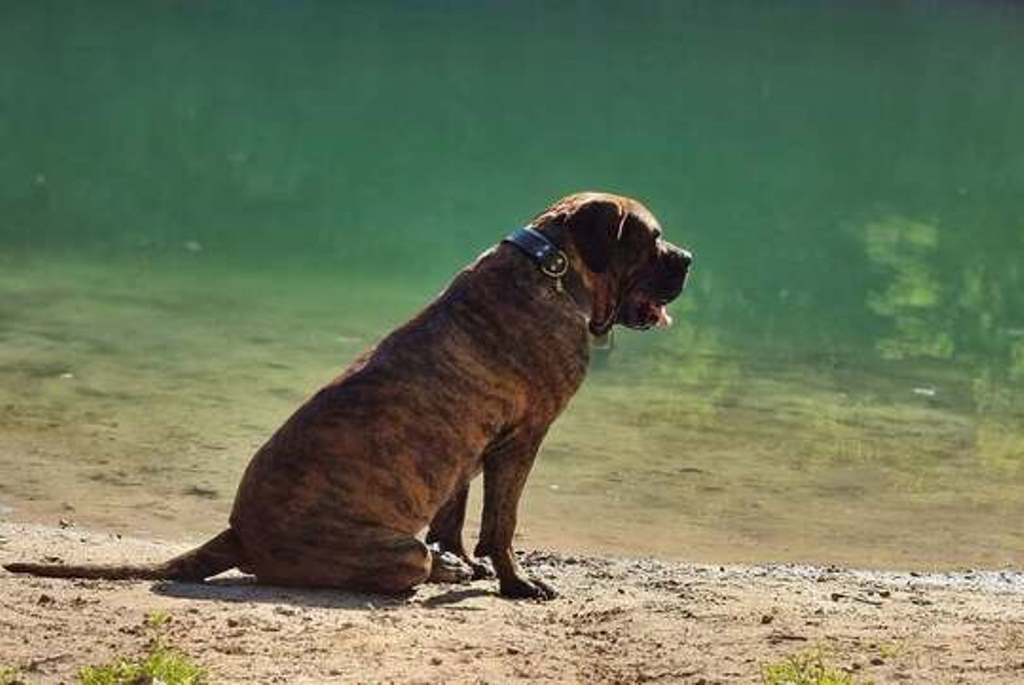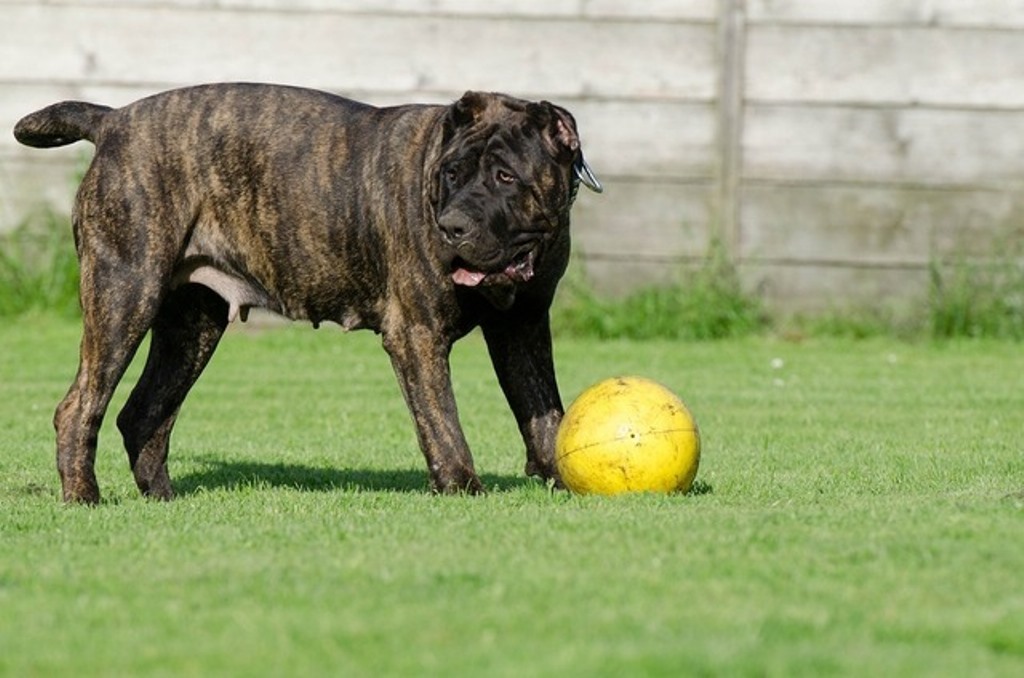
Traits and Characteristics of Dogo Canario Breed
The origin of the dogo canario dog breed is, as its name suggests, from the Canary Islands, specifically the islands of Tenerife and Gran Canaria, especially the latter where it has become a symbol. It is a relatively young breed. In fact, it dates back to around 1800 when the English Mastiff, which arrived in the archipelago at the beginning of the century, and the Bardino Majorero, which is now almost extinct, were crossed.
The purpose of the selection was to create a fighting dog, a sport that was very fashionable at that time. With the prohibition of dog fighting, this breed felt a halt to its spread and almost risked extinction, but for the last few decades it has been thriving again, although there are not very many examples.
Its origins, or rather the origin of the majoreros, which is the direct ancestor of the dogo, dates back to the 14th century, to pre-Hispanic times, where these dogs were used as herding dogs. Only later were they thought to crossbreed with molossoid dogs such as the Mastiffs and Bulldogs and Bull Terriers.
In the last century, it was used extensively for guarding sheep and cattle herds, accompanying and protecting them. This breed used to be on the list of dangerous dog breeds, and was taken off the list in 2009, although it is still illegal to keep this breed of dog in some countries.
It is also a valuable guard and defence dog.
Character of the dogo canario dog breed

The dogo canario, despite its reputation for being created for dog fights, is not an aggressive or mean dog. Instead, it is a well-balanced dog that can handle itself and is also a good companion for the whole family. Obviously it is a dog that, also in view of its size, needs to be raised responsibly and by an owner with a firm hand. It is therefore not suitable for those who are new to dogs. Early socialisation will accustom him to having a good temperament, both with other animals and with people.
With strangers, however, he is very wary and even with other dogs he does not always get along well. You could say that he has his own preferences, so initially he tends to keep to himself, but once the ice is broken, he is quite sociable.
It has a very close relationship with its owner, it gets very attached and tends to follow him everywhere, however it also gets attached to other family members and especially with children it has a strong protective instinct. It likes to play, but even more likes to protect them from a distance as it does not like confusion very much.
It adapts poorly to living in a flat, as it loves being outdoors, the ideal for the dogo canario is a house with a large garden and it still needs to take long walks and be active.As already mentioned, it is an excellent watchdog, it rarely barks, but when it does it is for a good reason, so it is a good house alarm.
It is a sometimes lively dog, but never too exuberant, it is very proud and confident, it clearly shows its moods and intentions, and any duplicity is alien to it.
Unfortunately, this breed has only a few specimens, but thanks to the ENCI, which has entrusted the Italian Molossi club with the protection of the breed, it is experiencing rapid growth. In Italy, on the Gargano following the return of the wolf, it has been successfully used for a few years to defend the flocks. Incredible is its attachment to the flocks and the newborn cubs, and just as resolute is its attack on predators entering the property.
It is also a dog that knows how to be alone and look after itself. It often demonstrates its desire for independence, occasionally seeking solitude, but the strong bond it establishes with its family makes it feel like a member of the same family.
Appearance of the dogo canario dog breed

The dogo canario, also called canary catch dog, and still referred to in the original language as ‘perro de presa canario’, is large in size. It is a strong dog of the molossoid type; the back is powerful, the chest is very broad and with a large musculature. The limbs are strong and of excellent bone structure.
The tail starts thick and narrows at the tip and is not very long. It is however agile and slender, with an elastic gait and long build, especially in the females. The male measures 60 to 65 centimetres at the withers and can weigh as much as 65 kilograms, although its average weight is around 50-55 kilograms. The female usually a little less. Its well-proportioned build proves its extraordinary strength and mobility.
The head of the Dogo Canario is broad and heavy, the muzzle is square and well wide. The rather large truffle can be black or pigmented, but almost black. The eyes are also usually dark, slightly oval, rather large and aligned, they have a serene appearance and an attentive look. The ears, of medium size, are drooping at the sides of the muzzle; on the ears the hair is very short and fine. In times gone by, the ears of the dogo canario were cropped, now fortunately this barbaric practice is banned by many countries around the world.
The coat is short and hard, rustic and rough to the touch, with the exception of the ears. It has no undercoat, and the length is not uniform, in fact it is slightly longer at the withers and on the buttocks. As far as colours are concerned, the most common is fawn, in its whole range down to sand, and brindle, which can be from very warm dark to very light grey and even blond.
Care and health of the dogo canario dog breed

The dogo canario is a strong and healthy dog, it may however suffer from hip and elbow dysplasia. Life expectancy is between 10 and 12 years.
It is very important to take him out for long walks at least twice a day to keep him fit and to let him let off steam, especially if he does not have much space at his disposal.
As far as coat care is concerned, as it is a rather short coat it does not need much maintenance, just brushing once a week and a regular wash every two to three months will suffice.
A controlled and balanced diet is needed as the canary dogo tends to eat more than necessary and therefore has a tendency to put on weight, especially if he does not do much exercise.






















